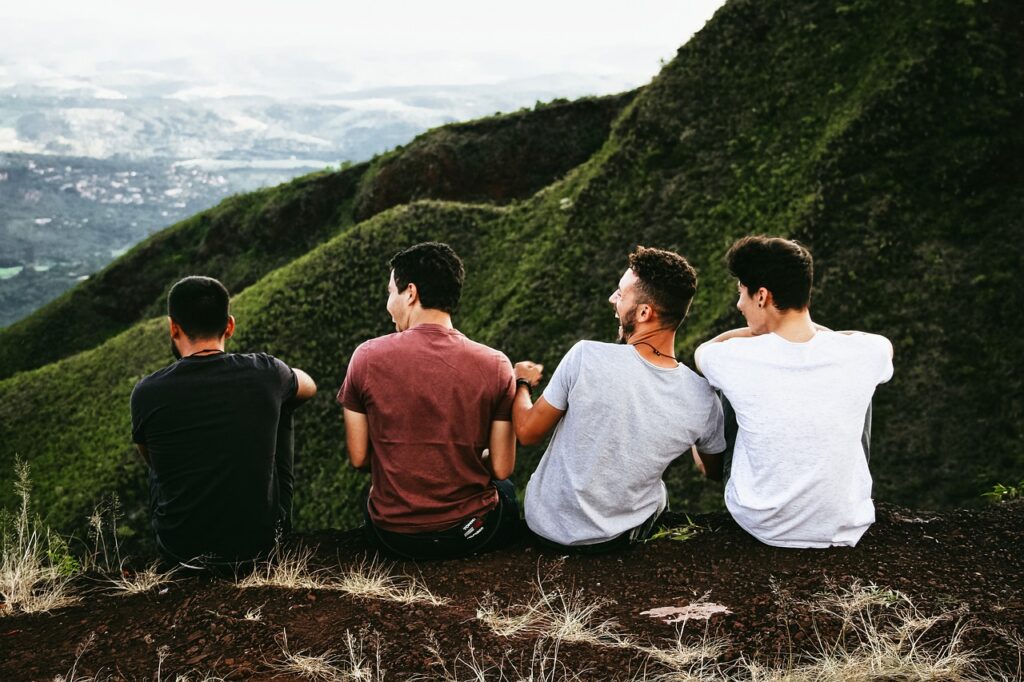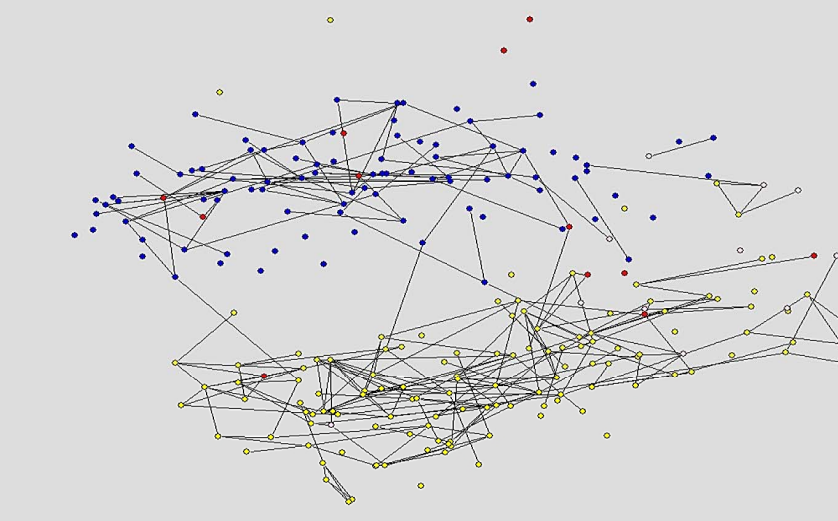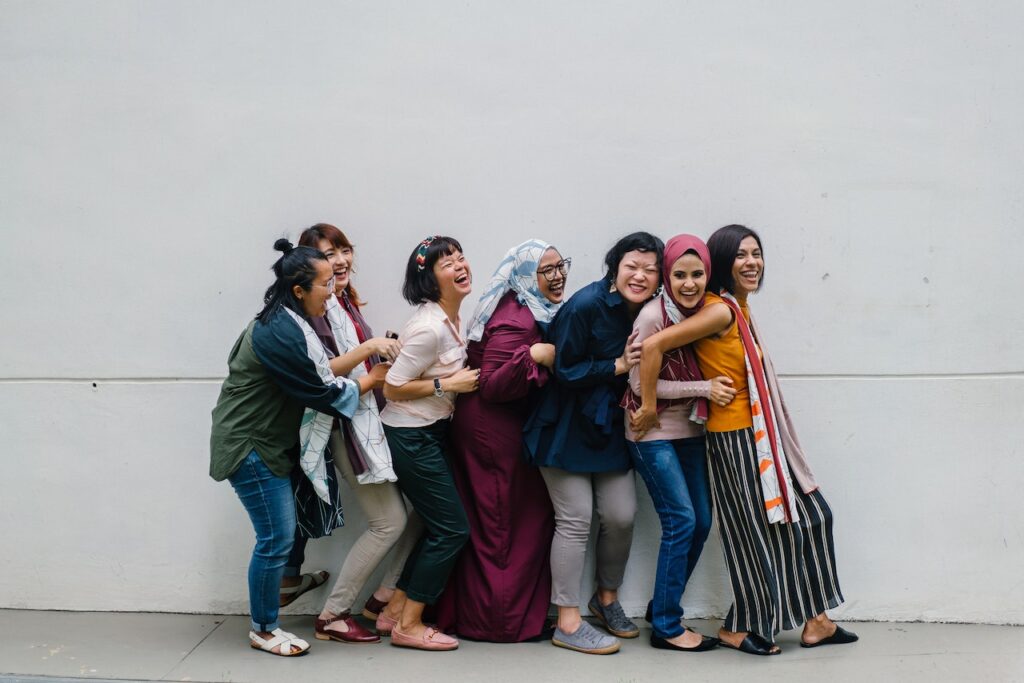|
Getting your Trinity Audio player ready...
|
Birds of a feather flock together, so the saying goes. Many of us will have anecdotal experience of this effect, which social scientists have dubbed as homophily: the tendency to stick with people similar to ourselves.
Jump ahead to
What is Homophily?
Homophily is among the most widely observed social phenomena. Fundamentally, it’s the principle is that similarity breeds connection. This similarity can be a key factor in determining the structure of our personal networks. Homophily results in homogenous personal networks and can powerfully define our social world. It can limit the movement of information, influence the attitudes we form and the interactions we engage in.
Friendship homophily describes the tendency for friendships to occur between similar people at higher rates than between dissimilar people. Research suggests that homophily in race and ethnicity are the biggest players influencing our social relationships. Factors like age, religion, education, occupation, and gender follow in roughly in that order.

Studies from across the world demonstrate that homophilic tendencies occur cross-culturally. They can emerge as early as in school years and endure for the rest of our lives.
The impact of homophily
Research on the impact of homophily on friendship groups finds compelling evidence of the bias to form relationships with people like you. Studies suggest that Asians and Blacks are biased toward interacting with their own race at rates over seven times higher than Whites. Whites are six times more likely to be friends with another White than a Black individual.

with Strong Friendships shown. Node colour describes race: green=Asian, blue=Black, red=Hispanic, yellow=White, pink=other/unknown.
Jackson, M.O., Social Structure, Segregation, and Economic Behavior (February 5, 2009).
This self-selection to be surrounded by people like ourselves has real-life consequences. One study investigating the so-called ‘Bamboo Ceiling’ postulates that East Asians in America are less likely to enter positions of leadership because of higher rates of ethnic homophily. This study measured East Asians as having the highest rate of ethic homophily compared to any other group. This suggests that bonding with people from different ethnic backgrounds can facilitate individuals’ leadership emergence in multi-ethnic environments.
The majority of modern workplaces have a drive towards diversity and inclusion. Taking into account how our ethnic identity develops as we grow up, there’s merit in starting this at school. Research suggests that focusing on what students have in common promotes interethnic friendships at school. This does carry the rick of backfiring, however. When ethnicity is correlated with the opinions held and students hold differing opinions, ethnic divisions could be reinforced.
Homophily and mixed ethnicity
What does homophily mean for people of mixed ethnicity? Questions about group identity can be challenging for people of mixed ethnicity. I can certainly empathise with the confusion of trying to fit into a conventional racial definition while feeling simultaneously like both and neither.
The prediction from the Race Relations Cycle, a theory put forward to understand racial assimilation, is that mixed ethnicity individuals will more closely identify with the majority group. Indeed, their very existence suggests the acceptance of a minority group into the mainstream.

Contrastingly, results from a study on mixed ethnicity schoolchildren in the USA found that children felt more strongly affiliated with the group they visually fit into. Another study in the USA noted a unique phenomenon in Asian mothers. They feared their mixed ethnicity children would become completely ‘Americanised’.
As a result of the importance of Asian culture in their households, mixed Asians may tend to choose an Asian best friend; someone who shares their cultural traditions, language and cuisine.
Unsurprisingly, then, results attest to the complexity and personal nature of both our racial identity and social networks.
Mixed ethnicity homophily?
As of the 2011 census, 1.5% of the population in England and Wales were mixed white and Asian. By the census definition, Asian includes Indian, Bangladeshi, Pakistani, Chinese and Other Asian. As a small ethnic group, it would be quite difficult for us mixed Asians for form a homophilic group. And while it may be more feasible for some of us who group around ethnic centres in cities, spare a thought for our countryside cousins.
It would be great to have more friends who could relate to my cultural experiences. But I think mixed ethnicity homophily might just exist.
Many of the mixed ethnicity individuals I’ve met have described how they gravitate towards other mixed ethnicity people.
I always enjoy finding another half Asian, and the excited dance of ‘I thought you were half, too!’. When I started my new job, it didn’t take long for myself and the other half Asian on the team to begin having discussions about Asian cuisine, having an Asian parent, and the failure of not being able to speak fluent Chinese.
It’s a discussion Thomas (who’s mixed British and Japanese) and I had when he was developing the concept of multippl. We both agreed that somewhere to share relatable experiences and discuss the more unique ones would be valuable. Perhaps this was homophily in action!
The future of homophily
As society becomes increasingly diverse, it’s interesting to consider what the future holds for homophily. Plenty of commentators have argued for greater group integration, and mixed ethnicity individuals may be a key part of this puzzle. Many scholars see intermarriage and the growing number of mixed ethnicity children as an indicator of narrowing social distance between groups and assimilation of minority groups into the majority.
Could it be possible that homophily slowly fades away as more cultural integration, coupled with the creep of globalisation, leads to an altogether more homogenous culture? Or, worryingly, could it lead to the opposite? The idea that people of mixed ethnicity are corruptions to constructions of racial purity is well documented historically and in the language used to describe them: bastards, mongrels etc. Could culture and defining your own become more important as racial boundaries become eroded?
Historically, mixed ethnicity individuals have been cultural go-betweens that encourage and enable cultural exchange. High rates of homophily can slow down the speed at which society reaches a global consensus while promoting high levels of consensus in tight-knit, isolated groups. It’s possible that mixed ethnicity people could help introduce some diversity into otherwise homogenous groups, encouraging broader social networks and integration.
Or who knows, maybe the future holds a whole lot more half Asian homophilic groups…?

